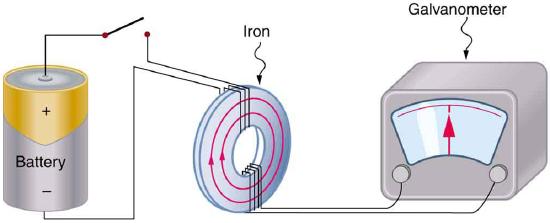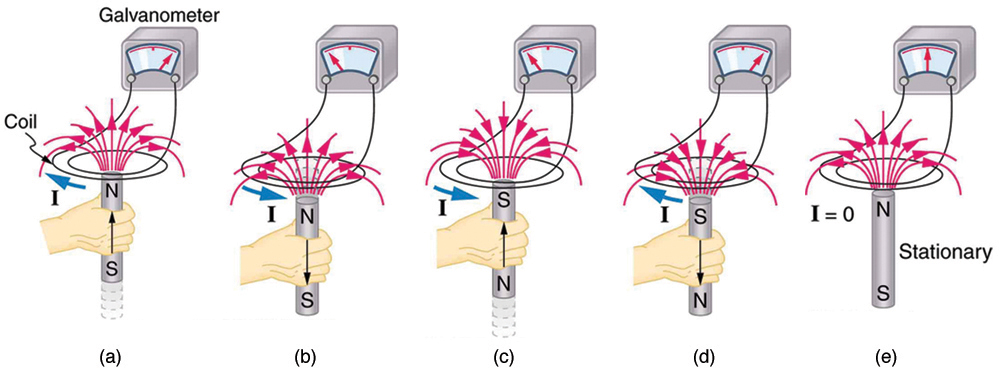9.1: Introduction
( \newcommand{\kernel}{\mathrm{null}\,}\)
The apparatus used by Faraday to demonstrate that magnetic fields can create currents is illustrated in Figure 9.1.1. When the switch is closed, a magnetic field is produced in the coil on the top part of the iron ring and transmitted to the coil on the bottom part of the ring. The galvanometer is used to detect any current induced in the coil on the bottom. It was found that each time the switch is closed, the galvanometer detects a current in one direction in the coil on the bottom. (You can also observe this in a physics lab.) Each time the switch is opened, the galvanometer detects a current in the opposite direction. Interestingly, if the switch remains closed or open for any length of time, there is no current through the galvanometer. Closing and opening the switch induces the current. It is the change in magnetic field that creates the current. More basic than the current that flows is the source voltage that causes it. The current is a result of an source voltage induced by a changing magnetic field, whether or not there is a path for current to flow.

An experiment easily performed and often done in physics labs is illustrated in Figure 9.1.2. A source voltage is induced in the coil when a bar magnet is pushed in and out of it. Source voltages of opposite signs are produced by motion in opposite directions, and the source voltages are also reversed by reversing poles. The same results are produced if the coil is moved rather than the magnet—it is the relative motion that is important. The faster the motion, the greater the source voltage, and there is no source voltage when the magnet is stationary relative to the coil.



